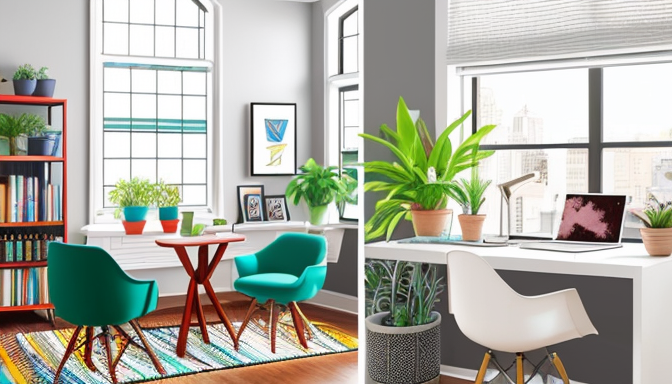Ready to take your design game to the next level? Understanding the fundamentals of design is your first step toward creating visuals that not only stand out but also resonate with your audience. Think of design like a recipe; without the right ingredients, your dish might not turn out as expected. The core principles—balance, contrast, alignment, and hierarchy—are the essential ingredients that every designer should master. Balance ensures your design feels stable, while contrast grabs attention and highlights key elements. Alignment creates a sense of order, and hierarchy guides the viewer’s eye through your work.
But wait, there’s more! Once you’ve got the basics down, it’s time to unleash your creativity with some innovative techniques. Imagine your design as a blank canvas; the more unique your brushstrokes, the more captivating your artwork becomes. Utilize tools like Adobe Creative Suite or Canva to experiment with shapes and colors that reflect your personal style. Don’t shy away from trying out new trends—sometimes, the most unexpected combinations can lead to stunning results!
To help you navigate this exciting journey, consider the following tips:
- Stay updated with design trends to keep your work fresh.
- Seek feedback from peers to gain new perspectives.
- Practice regularly to refine your skills and discover your unique voice.
In essence, mastering design is about blending fundamentals with innovation, creating a unique style that truly represents you. So, are you ready to design like a boss?
Understanding Design Fundamentals
Grasping the core principles of design is crucial for creating compelling visuals. Imagine walking into a room where everything is perfectly balanced; it just feels right, doesn’t it? This is the essence of balance in design. Balance ensures that no single element overwhelms the others, creating a sense of harmony. Think of it as the foundation of a house—without it, everything could come crashing down.
Next up is contrast, a powerful tool that can make your designs pop! By juxtaposing different elements—like light against dark or large against small—you draw the viewer’s eye to what matters most. It’s like seasoning in cooking; a little can enhance the flavor, but too much can ruin the dish.
Another fundamental is alignment. Proper alignment guides the viewer’s journey through your design, making it easier to digest. Imagine reading a book where the text is scattered all over the page; it would be chaotic! Instead, when elements are aligned, they create a visual flow that feels effortless.
Finally, let’s talk about hierarchy. This principle helps establish the order of importance among elements. By varying sizes, colors, and placements, you can lead your audience’s attention exactly where you want it. Think of it as directing traffic—without clear signs, chaos ensues!
To wrap it all up, mastering these design fundamentals—balance, contrast, alignment, and hierarchy—will empower you to create visuals that not only capture attention but also communicate effectively. So, are you ready to take your design skills to the next level?

Innovative Techniques for Unique Designs
When it comes to design, thinking outside the box is not just encouraged—it’s essential! To truly stand out in a crowded marketplace, you need to harness innovative techniques that can elevate your work from ordinary to extraordinary. Imagine your designs as a canvas; the more you experiment, the more vibrant and captivating your masterpiece becomes!
One of the most effective ways to spark creativity is by exploring unconventional color palettes. Instead of sticking to the same old hues, try combining unexpected colors to create a striking visual impact. For instance, pairing a soft pastel with a bold neon can produce a delightful surprise that catches the eye. You can also use tools like Adobe Color to find unique combinations that resonate with your audience.
Additionally, incorporating dynamic typography can transform your designs. Typography is not just about choosing a font; it’s about expressing emotion and personality. Play with different font weights, sizes, and styles to create a hierarchy that guides the viewer’s eye. Remember, your text can be as much a part of the design as the images themselves!
Moreover, consider the power of negative space. This technique involves using the empty areas around your design elements to create balance and draw attention. It’s like breathing space for your visuals, allowing your audience to focus on what truly matters. When you master these techniques, your designs won’t just be seen—they’ll be remembered!
Frequently Asked Questions
- What are the core principles of design?
The core principles of design include balance, contrast, alignment, and hierarchy. Mastering these elements helps create visuals that not only look good but also communicate effectively with your audience.
- How can I develop a unique design style?
To develop a unique design style, experiment with different techniques and tools. Don’t be afraid to break the mold! Try mixing various styles and influences until you find what resonates with you and your audience.
- Why is contrast important in design?
Contrast is crucial because it helps to draw attention to key elements in your design. It can make text more readable, highlight important information, and create visual interest that keeps viewers engaged.
- Can I use design principles in non-visual projects?
Absolutely! Design principles can be applied to various fields, including writing, marketing, and even project management. They help structure your work in a way that is visually and conceptually appealing.